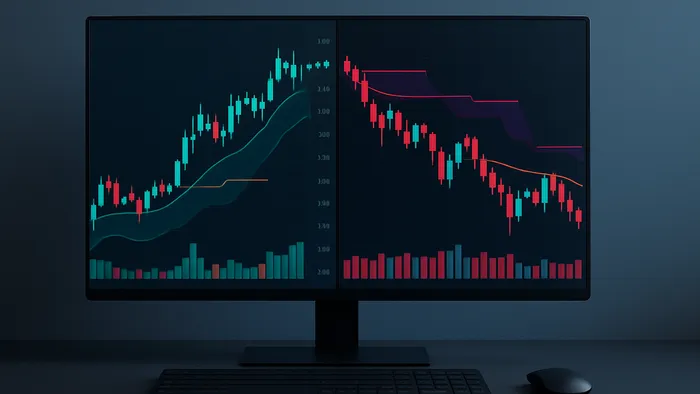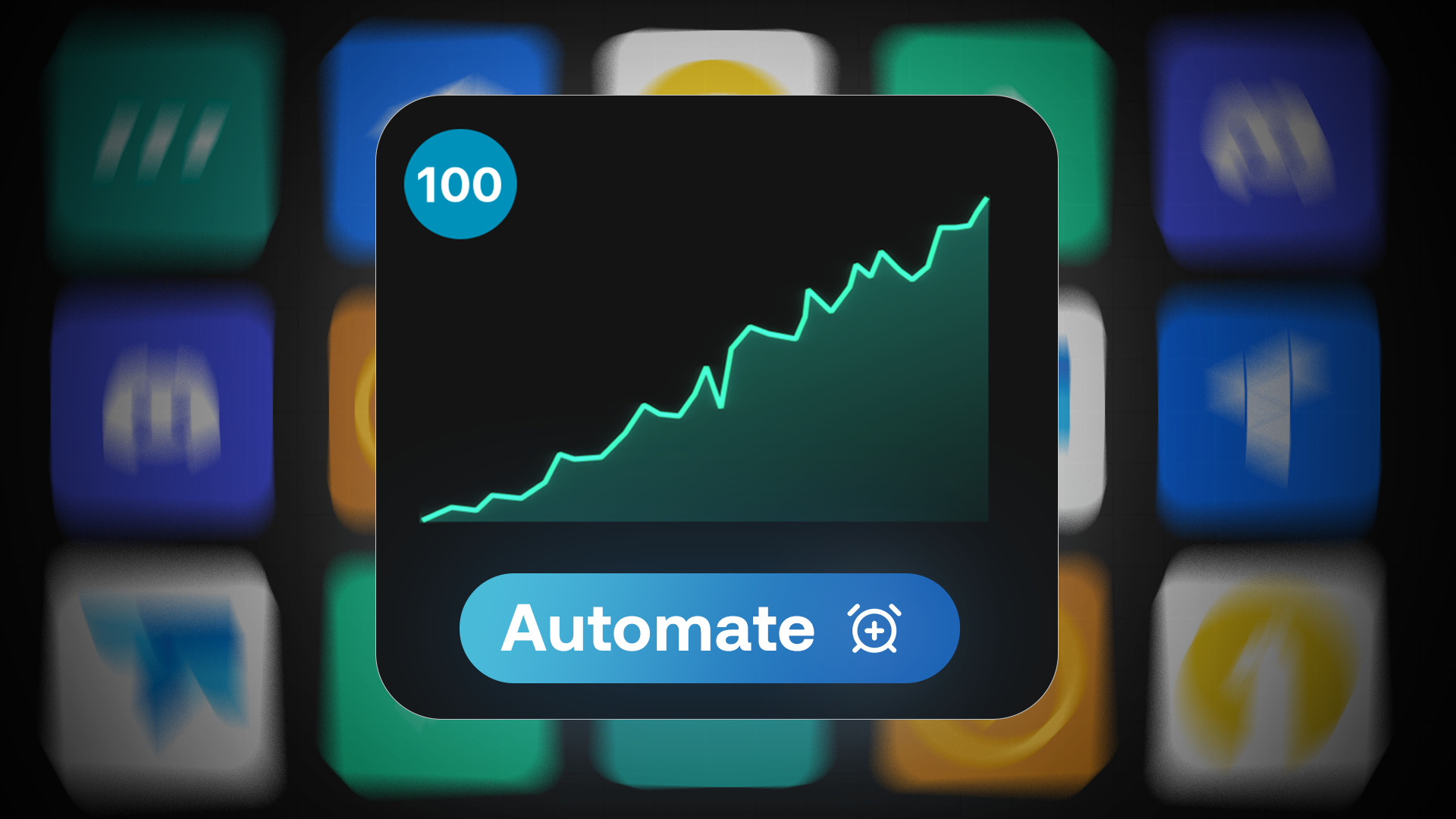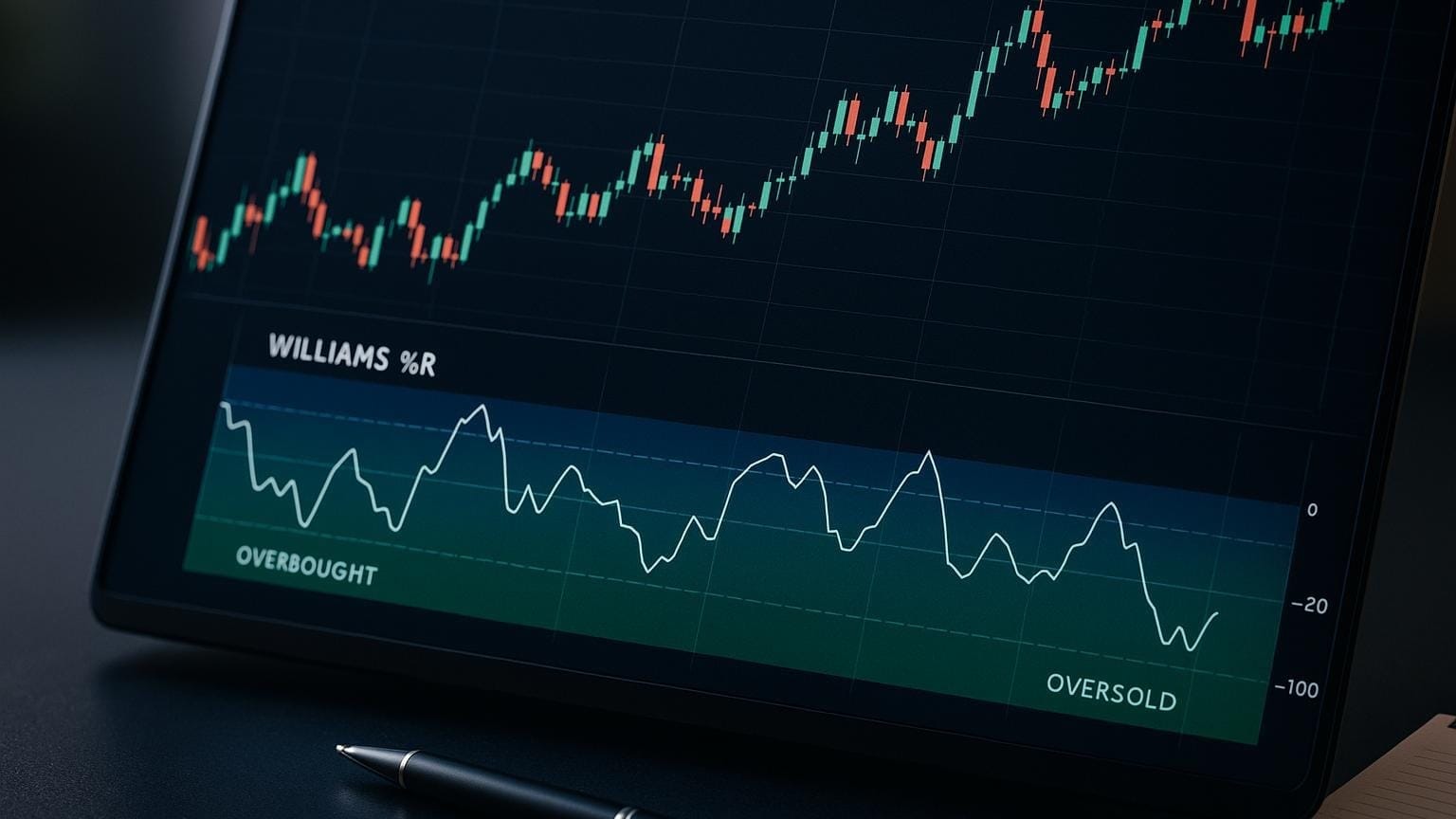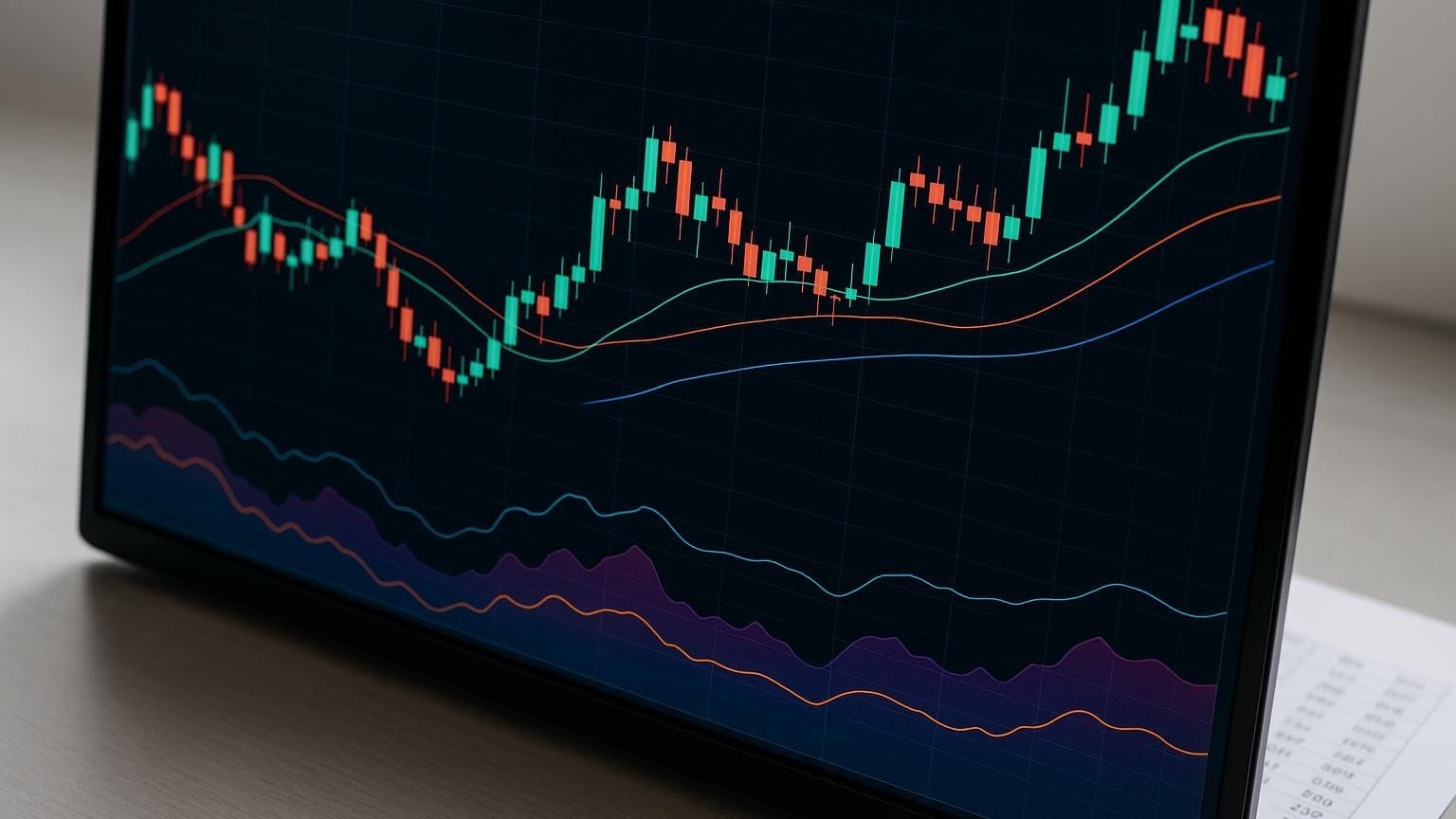Explore the differences between two popular trading platforms, focusing on their unique features, pricing, and suitability for various trading styles.
Looking for the right trading tools? SmartTrader and LuxAlgo each provide distinct capabilities for traders. Here's a quick overview:
- SmartTrader: Focuses on AI-driven automation, integrates with MT4/MT5, and includes over 100 indicators. Pricing ranges from free to $99.95 / month.
- LuxAlgo: Provides specialized TradingView tools for price action and Smart Money Concepts (SMC) analysis, plus AI Backtesting on TradingView. Plans include a Free plan ($0), Premium ($39.99 / month), and Ultimate ($59.99 / month).
Quick Comparison
| Feature | SmartTrader | LuxAlgo |
|---|---|---|
| Core Focus | AI-driven automation | Price action & Smart Money Concepts with AI Backtesting |
| Indicators | 100+ built-in, customizable | Specialized for market structure and trend analysis |
| Platform Integration | MT4/MT5 | TradingView |
| Pricing | Free to $99.95 / month | Free ($0), Premium ($39.99 / mo), Ultimate incl. AI Backtesting ($59.99 / mo) |
| Unique Strengths | AI insights, automation, risk tools | Extensive free Library, AI Backtesting Assistant, toolkits & screeners |
Key takeaway: SmartTrader is ideal for automation and multi-broker trading, while LuxAlgo excels in technical analysis and TradingView integration. Choose based on your trading style and platform preferences.
TradingView vs. MetaTrader: Which Platform Is Best for Trading?

1. SmartTrader Features

SmartTrader combines AI-driven analytics with essential tools for technical analysis and trade execution, making it a versatile platform for traders.
Advanced Charting and Analysis
SmartTrader’s charting system lets users display up to eight charts per workspace and includes over 100 technical indicators. These tools help traders pinpoint market trends, entry points, and exits. With flexible timeframes and customizable price styles, the platform offers an adaptable charting experience.
AI-Powered Insights
The platform’s AI algorithms sift through market data to deliver insights tailored to individual trading goals and risk levels.
Automation and Integration
Smart Scripts enable traders to execute strategies effortlessly. Integration with MetaTrader 4 (MT4) and MetaTrader 5 (MT5) brokers allows direct trade execution and synchronized analysis across devices.
Risk-Management Tools
SmartTrader includes backtesting capabilities and configurable alerts to keep traders informed when specific market conditions arise.
Educational Resources
Through its Smart Hub, SmartTrader provides tutorials, a knowledge base, and trading rooms to help traders refine their strategies.
2. LuxAlgo Features
LuxAlgo provides specialized tools for in-depth market analysis on TradingView, offering a different approach compared to SmartTrader’s focus on AI-driven automation.
- Indicator Library
Access hundreds of free and exclusive indicators—including the Triangular Momentum Oscillator and the Market Structure Oscillator—available in the LuxAlgo Library. - Smart Money Concepts (SMC)
Identify order blocks, fair-value gaps, and other institutional footprints in real time. For deeper theory, see Market Structure (PAC). - Trading Signals & Overlays
- Indicator Overlays and visual confirmations
- Custom Alerts for monitoring bespoke conditions
- Real-Time Ranges based on dynamic levels
- Predictive Support & Resistance
- AI Backtesting Assistant
Validate strategies across timeframes and asset classes on LuxAlgo’s AI Backtesting platform. Learn more in the documentation. - Market Analysis Tools
The Oscillator Matrix offers trend, momentum, and reversal analysis. Explore pattern & structure insights with Market Structure (Intrabar). - Customization, Screeners & Backtesters
Fine-tune settings and scan multiple assets using TradingView-based screeners and backtesters. See S&O Toolkit intro and PAC Toolkit intro. For backtesting on TradingView scripts, visit LuxAlgo Backtesters.
Key Differences and Trade-offs
| Feature Category | SmartTrader | LuxAlgo |
|---|---|---|
| Core Focus | AI-driven automation and integrated risk tools | Comprehensive price-action analysis plus AI Backtesting for strategy creation |
| Indicator Depth | Over 100 built-in indicators (closed-source) | Hundreds of free Library and exclusive indicators across toolkits |
| Platform Reach | Desktop-only MT4/MT5 broker linkage | Runs inside TradingView—web-based, mobile-friendly, and broker-agnostic |
| Pricing Structure | Free tier; large jump to $99.95 / mo Pro plan | Free ($0), Premium ($39.99 / mo), Ultimate ($59.99 / mo, includes AI Backtesting) |
| Unique Strengths | Perfect Storm indicator, workspace management | Smart Money Concepts, AI Backtesting Assistant, integrated screeners & backtesters |
Why LuxAlgo edges ahead: It combines TradingView’s best-in-class charting with specialized Smart Money Concepts analysis, a large free Library, and built-in AI Backtesting—all at a lower top-tier price point.
Key Trade-offs
- Learning Curve
SmartTrader’s automation stack requires setup, whereas LuxAlgo’s TradingView interface feels familiar to most technical traders. - Cost vs. Value
SmartTrader’s Pro plan is $99.95 / month, while LuxAlgo’s Ultimate plan is $59.99 / month and bundles AI Backtesting. - Mobile Experience
SmartTrader’s mobile app is limited. LuxAlgo inherits TradingView’s full-featured mobile and browser-based UI.
"In investing, what is comfortable is rarely profitable." – Robert Arnott
Platform Selection Guide
This guide builds on the feature analysis above to help you align your trading approach with the most suitable platform.
For Day Traders & Scalpers
SmartTrader is ideal for fast-paced algorithmic traders who require direct MT4/MT5 execution and automated strategy deployment.
For Technical Analysis Enthusiasts
LuxAlgo is built for traders who rely on deep price-action insights and Smart Money Concepts, leveraging TradingView’s charts and LuxAlgo’s AI Backtesting. Explore the Price Action Concepts (PAC) Toolkit and Signals & Overlays (S&O) Toolkit.
Trading Style Compatibility Table
| Trading Approach | Recommended Platform | Key Features |
|---|---|---|
| Algorithmic Trading | SmartTrader | Simplifies script automation and deployment |
| Price-Action Trading | LuxAlgo | Real-time market-structure insights |
| Multi-broker Execution | SmartTrader | Centralized orders across MT4/MT5 brokers |
| Collaborative Strategy Sharing | LuxAlgo | Free indicator Library & TradingView community |
Budget Considerations
LuxAlgo offers:
- Free Plan: $0, lifetime access to the Library and more
- Premium: $39.99 / mo for advanced signals, alerts, and oscillator tools on TradingView
- Ultimate: $59.99 / mo including the AI Backtesting platform
SmartTrader offers a free tier and a Pro plan at $99.95 / mo. Compare the total cost to your needed features.
Technical Integration: What to Consider
Choose SmartTrader if you:
- Require direct MT4/MT5 broker integration
- Prefer AI insights without heavy technical analysis
- Need multi-broker execution in one dashboard
Choose LuxAlgo if you:
- Use TradingView as your main charting platform
- Focus on price action and Smart Money Concepts
- Want built-in AI Backtesting and a large free Library of indicators
References
- LuxAlgo — Official Site
- LuxAlgo — Indicator Library
- LuxAlgo — AI Backtesting Assistant
- Docs — AI Backtesting Assistant (Intro)
- Docs — Fetching Strategies (AI Backtesting)
- Docs — Price Action Concepts (PAC) Toolkit
- Docs — Market Structure (PAC)
- Docs — Signals & Overlays (S&O) Toolkit
- Docs — Indicator Overlays (S&O)
- Library — Smart Money Concepts (SMC)
- Library — Market Structure Oscillator
- Library — Market Structure (Intrabar)
- Library — Oscillator Matrix
- Library — Multi-Chart Widget
- Features — Backtesters (TradingView)
- SmartTrader — Official Site
- TradingView — Platform
- MetaTrader 4 — Overview
- MetaTrader 5 — Official Site








